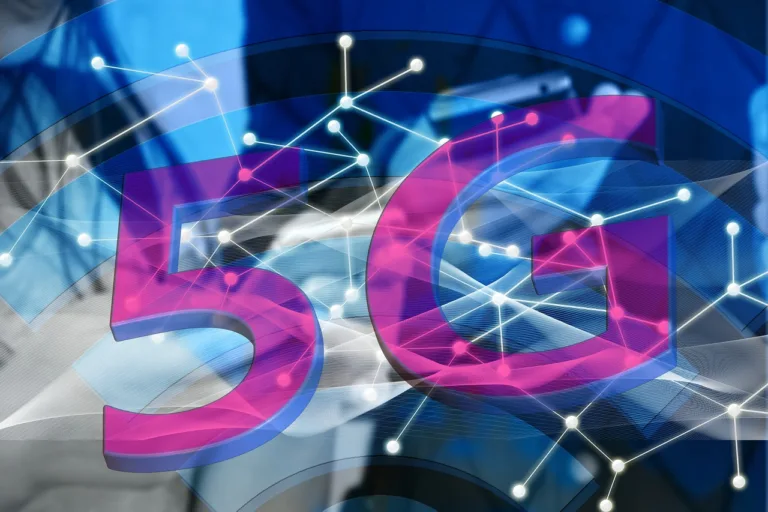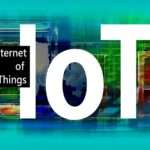In today's rapidly evolving technological landscape, the Internet of Things (IoT) has emerged as a game-changer, revolutionizing the way we live and interact with our surroundings. The IoT refers to a network of interconnected devices embedded with sensors, software, and connectivity capabilities, enabling them to collect and exchange data. From smart homes to autonomous vehicles, the possibilities are limitless. However, to fully harness the potential of the IoT, a robust and reliable network infrastructure is crucial. This is where the fifth generation of wireless technology, 5G, comes into play. The role of 5G promises to go beyond its predecessors by offering faster speeds, lower latency, higher capacity, and improved connectivity, making it the ideal catalyst for accelerating IoT adoption. Let's explore how 5G revolutionizes the IoT landscape and the opportunities it brings.
Enhanced Connectivity and Reduced Latency
One of the key advantages of the role of 5G is its ability to provide enhanced connectivity and reduced latency. With its lightning-fast speeds, 5G enables real-time communication between devices, making it ideal for applications that require instant responses, such as autonomous vehicles or remote robotic surgeries. This low-latency connection ensures a seamless user experience and eliminates the risk of delays or disruptions.
Moreover, the role of 5G increased capacity allows for a greater number of devices to connect simultaneously. This is particularly significant in scenarios where hundreds or thousands of devices need to communicate concurrently, such as in smart cities or industrial IoT deployments. With the exponential growth of connected devices, 5G's ability to handle massive machine-to-machine communication becomes indispensable.

Higher Data Speeds and Bandwidth
Another compelling aspect of the role of 5G is its higher data speeds and bandwidth. With speeds expected to reach up to 100 times faster than 4G, 5G enables quick and efficient data transmission, allowing devices to exchange information rapidly. This plays a pivotal role in industries that rely on vast amounts of data, such as healthcare, manufacturing, and logistics.
For instance, in healthcare,the role of 5G can facilitate the seamless transfer of large medical files, enabling remote diagnosis and telemedicine. Similarly, in manufacturing, 5G-powered IoT devices can transmit real-time data about the production process, enhancing efficiency and minimizing downtime. These higher data speeds and bandwidth capabilities unlock a plethora of opportunities for industries to innovate and optimize their operations.
| Aspect | Role of 5G |
|---|---|
| Speed and Latency | 5G provides significantly higher speeds and lower latency compared to previous generation networks, enabling real-time communication and data transmission which is crucial for IoT applications. |
| Connectivity | With enhanced connectivity, 5G can support a larger number of connected devices simultaneously. This is essential for IoT ecosystems, especially in industrial and urban settings. |
| Reliability | 5G offers more reliable connections which are critical for IoT applications where a loss of connection can have significant implications, such as autonomous vehicles and healthcare monitoring systems. |
| Energy Efficiency | 5G networks are designed to be more energy-efficient, thereby supporting the operation of IoT devices with lower power consumption and longer battery life. |
| Bandwidth | Increased bandwidth of 5G networks allows for higher data throughput, which is necessary for handling the vast amounts of data generated and transmitted by IoT devices. |
Edge Computing and Distributed Architecture
In the traditional IoT model, data collected by devices is sent to the cloud for processing and analysis. However, with the exponential growth of IoT devices and the colossal amounts of data generated, this centralized approach is becoming increasingly unsustainable. This is where the concept of edge computing and distributed architecture comes in, and the role of 5G acts as an enabler.
Edge computing involves processing data closer to the source, on the network edge, instead of sending it back and forth to the cloud. With 5G's low latency and high bandwidth, processing data at the edge becomes faster and more efficient. This distributed architecture not only reduces the strain on the network but also ensures real-time analysis and actionable insights.
For instance, in a smart city deployment, with the role of 5G enabled edge computing, traffic cameras can process the video footage locally and identify potential traffic violations in real-time. This immediate analysis enables timely intervention, improving overall safety and efficiency. By leveraging 5G's capabilities, edge computing becomes a viable solution for handling the ever-increasing volume of IoT-generated data.

Unlocking New Possibilities
The combination of the role of 5G and IoT opens up a world of new possibilities and use cases across various sectors. Here are a few examples of how 5G accelerates IoT adoption:
Smart Homes
With the role of 5G , smart homes become even smarter. From voice-activated assistants to interconnected devices, 5G enables seamless connectivity among various home automation systems. Imagine controlling your thermostat, lighting, and security cameras through your smartphone, all with ultra-fast speeds and minimal latency.
Autonomous Vehicles
Autonomous vehicles heavily rely on high-speed, low-latency connections for accurate real-time data exchange. With the role of 5G, the dream of fully autonomous vehicles becomes a closer reality, revolutionizing transportation and minimizing road accidents.
Smart Cities
5G plays a pivotal role in the development of smart cities. From intelligent traffic management systems to connected public services, 5G enables efficient and sustainable urban environments. Real-time data analysis and decision-making become the norm, enhancing the quality of life for citizens.
Industrial IoT
5G offers immense potential in industrial settings, where machines, sensors, and systems need to communicate flawlessly. With its faster speeds and low latency, 5G can enable remote monitoring, predictive maintenance, and real-time optimization, leading to increased productivity and reduced downtime.

Final Thoughts on Role of 5g
The role of 5G is poised to revolutionize the IoT landscape, unlocking its full potential and accelerating its adoption across industries. With its enhanced connectivity, reduced latency, higher data speeds, and bandwidth capabilities, 5G offers the ideal foundation for deploying and scaling IoT applications. Edge computing and distributed architecture, coupled with 5G, provide a viable solution for handling the massive volume of IoT-generated data.
As 5G continues to roll out globally, we can expect a surge in IoT innovation and countless opportunities for businesses, governments, and individuals. From smart homes to autonomous vehicles, from smart cities to industrial IoT, the collaboration between 5G and the IoT opens up a new world of possibilities where devices are seamlessly connected, enabling a more efficient, intelligent, and interconnected future.
Are you ready for the 5G-powered IoT era? Embrace the upcoming technological revolution, and get ready to witness the transformative impact of 5G on the Internet of Things.




